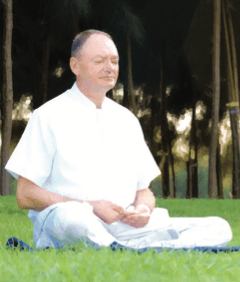By: BK Surya
Source: The Daily Guardian
Dated: August 2nd, 2025

Going on a pilgrimage holds deep spiritual significance in many religious traditions, and it often involves both a physical journey and a transformative inner experience.
Pilgrimages take believers to sacred sites that are associated with important religious events, figures, or experiences. These places are believed to hold a unique spiritual energy, and visiting them allows pilgrims to strengthen their connection with the Divine.
Pilgrims seek something beyond the mundane world — a connection with the sacred, a deepening of faith, and a journey toward spiritual growth, healing, and transformation. Many undertake the journey seeking purification. This might be physical, emotional, or spiritual. The act of walking or travelling a long distance is symbolic of shedding burdens — whether personal, emotional, or moral. The physical effort involved often mirrors the spiritual effort to leave behind past mistakes or distractions and renew one’s faith.
The journey itself can be a form of penance, repentance, or seeking forgiveness. The hardships faced along the way — whether they are physical, such as long walks and difficult terrain, or emotional (facing inner fears, doubts, or attachments) — can help transform the pilgrims. The physical and emotional discomfort reminds pilgrims of their dependence on the Divine, reinforcing feelings of humility and gratitude.
The act of leaving behind the familiar world and venturing into unknown or sacred territory also helps pilgrims confront their weaknesses, fears, and limitations. Along the way, pilgrims might experience moments of deep insight, revelation, or self-reflection, gaining clarity about their life’s purpose and their relationship with the Divine.
Many people go on a pilgrimage seeking healing — whether physical, emotional, or spiritual. Sacred places are believed to have healing properties, and pilgrims visit them with hopes of receiving blessings, a cure for their illness, or protection. The healing can be both physical and metaphorical, with many pilgrims returning home feeling rejuvenated or spiritually restored.
But how long does the feeling of rejuvenation or spiritual transformation last? Once the pilgrims are back in their everyday lives, where their time and attention are consumed by mundane tasks, spiritual concerns are gradually pushed to the periphery of their mind and, in many cases, forgotten.
Spiritual growth does not come from a one-off trip. The experiences gained during a pilgrimage may strengthen my faith, but it takes regular attention and effort to sustain it and bring about meaningful change in the quality of my consciousness and my life, in order to become a better person.
That requires the pilgrimage of remembrance: taking my mind and intellect to a sacred space, an elevated level, where I am aware of my spiritual identity – that I am a soul – and I connect to the Supreme Being, or God. I can undertake this pilgrimage whenever I choose, in the comfort of my home, or even at my workplace. It involves no expense or hardship. I just have to turn my attention within and see myself as I am – a soul, a luminous point of consciousness, filling the body with life force. The body is the physical medium through which I see, hear, speak, and interact with the world outside. Without me - the soul - the body is lifeless – a corpse.
Then, I remember who I belong to: I am a child of the Supreme Soul, the ocean of peace, love, and mercy. Like my Father, I too am full of these virtues – they are my original qualities. When I hold this memory in my mind for as long as I can, and experience myself as a being of peace, love, and compassion, I start becoming that in practical terms. Regularly going on this pilgrimage of remembrance changes the quality of my consciousness, and my innate virtues begin to be naturally expressed in my behaviour. I find that I have become a better person: I no longer have to make a conscious effort to be nice; it comes naturally to me. This transformation is the fulfilment of the hope that pilgrims have when they set out on their journey of achieving spiritual renewal.

BK Surya is a Rajyoga teacher
at the Brahma Kumaris headquarters in Mount Abu, Rajasthan.



